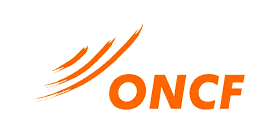 Morocco’s Rail Revolution: High-Speed Expansion and Digital Innovation Set to Transform North Africa
Morocco’s Rail Revolution: High-Speed Expansion and Digital Innovation Set to Transform North Africa
As Morocco gears up to co-host the 2030 FIFA World Cup alongside Spain and Portugal, the nation is accelerating a sweeping transformation of its transportation infrastructure, with a particular focus on rail connectivity. This ambitious push dovetails seamlessly with Morocco’s broader ‘Vision 2040’ strategy, which aims to dramatically expand and modernize the country’s railway network, positioning it as a continental leader in transport innovation.
At the heart of this transformation lies a commitment to integrating cutting-edge digital infrastructure. Modern rail systems increasingly depend on real-time data, AI-driven traffic management, and advanced control systems to optimize operations, enhance safety, and improve passenger experience. Morocco’s plans reflect this trend, emphasizing the need for robust, energy-efficient, and reliable digital networks that can support the demands of a future-ready railway system.
According to the African Development Bank, Morocco has attracted investment offers totaling around \$14 billion to upgrade and expand its rail links. The country aims to nearly double its rail network from the current 2,200 km to an impressive 3,800 km by 2040. This expansion will connect 43 cities, up from 23 today, increasing rail service coverage to serve 87 percent of the population, compared to just 51 percent currently. The network will encompass high-speed rail, intercity lines, and tramway developments, all designed to slash travel times, boost economic integration, and enhance mobility across the nation.
Morocco’s pioneering high-speed rail (HSR) line, the Al Boraq, inaugurated in 2018, links Tangier, Kenitra, Rabat, and Casablanca. Building on this success, King Mohammed VI launched construction in April 2025 of a new Kenitra–Marrakech high-speed line, a 430 km extension designed for speeds up to 350 km/h. This line will cut travel time from Tangier to Marrakech by over two hours, bringing it down to approximately 2 hours and 40 minutes. It will also connect Rabat directly to Casablanca’s Mohammed V International Airport in just 35 minutes, a critical enhancement as Morocco prepares to welcome global visitors for the World Cup.
Looking beyond Marrakech, plans are underway to extend the high-speed corridor further south to Agadir, a key economic and tourist hub. The government envisions a continuous high-speed Atlantic axis stretching from Tangier to Agadir, creating a powerful spine for national connectivity. Complementing this north-south route, a second high-speed line is planned between Rabat and Fez, establishing an east-west corridor that will further integrate Morocco’s rail network.
Once these projects are completed, Morocco will boast Africa’s largest high-speed rail network, expanding from 320 km today to over 1,280 km by 2040. This milestone will not only enhance domestic travel but also elevate Morocco’s status as a transport innovator on the continent.
Alongside high-speed rail, Morocco is investing heavily in expanding and modernizing its conventional intercity rail system. The national operator plans to more than double the size of this network, from about 2,110 km to 4,410 km by 2040. Upgrading existing corridors is a priority to enable more frequent services, reduce bottlenecks, and ensure smooth integration with new high-speed segments.
Supporting this expansion is a massive renewal of rolling stock, with an order of 168 next-generation trains from leading manufacturers in France, Spain, and South Korea. These new trains promise faster, more reliable, and energy-efficient service, enhancing passenger comfort and operational sustainability.
Morocco’s rail ambitions are backed by a diverse coalition of financiers, including multilateral development banks, European institutions, friendly nations, and government budgets. This diversified funding approach has enabled the country to mobilize capital on an unprecedented scale, shifting the focus now to effective execution and delivery.
Global digital infrastructure leader Vertiv highlights several critical challenges and opportunities in Morocco’s rail modernization journey. Cost management remains key, as operators must balance infrastructure performance with minimizing operating and maintenance expenses. Integrating future-ready technologies into existing systems is essential to boost efficiency and enable automation.
Vertiv also stresses the importance of building a smart digital infrastructure network that spans from core data centers to edge computing sites at remote stations. This seamless integration is vital for managing the wide array of applications required for modern rail operations, from AI-driven traffic control to real-time monitoring and predictive maintenance.
Reliability and safety are paramount. Immediate access to accurate data is crucial for addressing critical issues swiftly, while robust cybersecurity measures protect communication networks from threats. Uninterruptible power supply (UPS) systems are necessary across all locations to prevent downtime caused by power disruptions, ensuring continuous operation of vital systems.
Morocco’s rail overhaul is more than a response to a global sporting event; it is a strategic investment in the country’s long-term development. By building one of Africa’s most advanced transport networks, Morocco is laying the digital foundations for a smarter, more resilient system that will serve generations to come.
This vision extends beyond physical connectivity. It embraces the integration of next-generation technologies, seamless operational support, and enhanced system reliability. Through collaboration with government bodies, transport leaders, and technology providers, Morocco is poised to set a new benchmark for rail innovation in Africa, combining digital ambition with tangible progress.
For the African travel and transport sectors, these developments signal exciting opportunities. Faster, more efficient rail travel will open new corridors for tourism, business, and regional mobility. The enhanced infrastructure will facilitate smoother journeys for millions, while the digital backbone will support smarter, safer, and more sustainable operations.
As Morocco accelerates towards 2030 and beyond, its rail transformation story offers a compelling example of how visionary planning, strategic investment, and technological innovation can converge to reshape a nation’s transport landscape and inspire the continent’s future.
